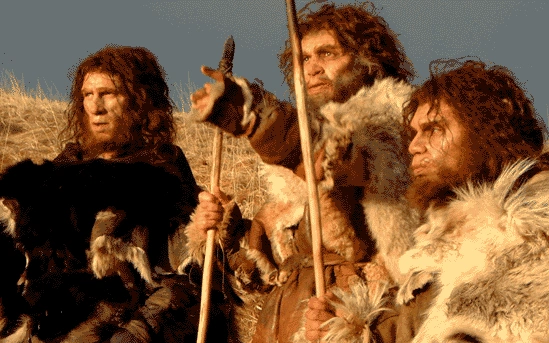
Article by
The image we hold of our closest relatives, the Neanderthals, has undergone a profound transformation since their discovery. Scientists worldwide seek answers about who they were, how they lived, and their relevance to us. These ancient beings, often misunderstood, moved swiftly and upright through their surroundings. Their survival demanded alertness, intelligence, the use of fire, clothing, and language, portraying them as highly intelligent ice age hunters akin to modern-day Inuit.
Neanderthals were not primitive; they were social beings, our mirror image, surviving harsh environments as skilled hunters. Initiation into hunting was a crucial Neanderthal lesson, highlighting their physical prowess exceeding that of modern humans. The fascination with Neanderthals extends globally, with proponents like American Erik Trinkaus proposing the intriguing notion of intermingling with them.
Scientists contemplate the intricate processes involved in Neanderthal-modern human evolution, exploring messy dynamics of populations and gene flow. Erik Trinkaus, a leading Neanderthal expert, has uncovered skeletons worldwide, hinting at a mixed-race heritage. Despite lacking genetic evidence due to technology constraints, the proximity of Neanderthals to us remains a captivating mystery, making them almost us but not quite.
Neanderthals demonstrated refined techniques, obtaining colors from stones, crafting spears comparable to modern instruments, and creating fire from tree fungus. Their survival in a dangerous landscape with limited technology for hundreds of thousands of years commands respect. While often considered primitive, Neanderthals deserve acknowledgment for enduring challenging conditions.
In our tendency to perceive Neanderthals as primitive and unintelligent, we overlook their resilience and capabilities. Placing ourselves in their society, we might find survival challenging, underscoring the remarkable journey of these stone age superstars. The Neanderthal myth, once synonymous with ridicule, now stands as a testament to their intelligence, resilience, and intricate connection to our own evolutionary story.
The Neanderthal myth, once confined to stereotypes of club-swinging primitives, now emerges as a story of resilience, intelligence, and an intricate connection to our own evolutionary journey. Scientists worldwide strive to uncover the mysteries of these stone age superstars, realizing that Neanderthals were not merely surviving but thriving as highly intelligent ice age hunters.
The image of Neanderthals as our mirror image challenges preconceptions, emphasizing their social nature and mastery in the art of hunting. The fascination with Neanderthals goes beyond their physical prowess; it delves into the complex dynamics of their interactions with modern humans. Erik Trinkaus's discoveries hint at a shared heritage, raising questions about the extent of our mingling with these ancient relatives.
Despite the absence of genetic evidence, the Neanderthals' proximity to us remains an enigma, making them almost us but not quite. Their refined techniques, from crafting sophisticated tools to creating fire, showcase a level of cultural elaboration that demands respect. Neanderthals survived in a dangerous landscape with technology far less advanced than ours, leaving an indelible mark on our understanding of human evolution.
As we reconsider Neanderthals, it becomes clear that our tendency to perceive them as primitive overlooks their enduring legacy. Placed in their society, the challenges we would face underscore the remarkable journey of these stone age superstars. The Neanderthal myth transforms from a narrative of ridicule to one of admiration, reflecting their intelligence, resilience, and profound impact on the tapestry of human history.
 Monthly "Azeem English Magazine", launched in 2000, records the information about diverse fields like mental health, literature, research, science, and art. The magazine's objective is to impart social, cultural, and literary values to society.
Monthly "Azeem English Magazine", launched in 2000, records the information about diverse fields like mental health, literature, research, science, and art. The magazine's objective is to impart social, cultural, and literary values to society.
+92 51 88 93 092
First Floor, RAS Arcade, Eidhi Market, Street#124, G-13/4, Islamabad, Pakistan, 44000.